1 General History
What is Film?
Learning Objectives
- Understand the difference between film as a technology, business, world culture, ideology, artifact, entertainment, and process.
- Learn about the distinguishing factors of each era of film.
- Understand the historical and economic impacts of film.
(This above link takes you to Film Appreciation by Drs. Yelizaveta Moss and Candice Wilson, a Creative Common text licensed under CC-BY. You should only focus on the introduction: What is Film?)
The following is taken from Cinema Scenes Textbook (2022) licensed under (CC-BY-NC-SA).
It is odd to begin a book by questioning what the discipline of the book is, but film is a diverse entity. Film was an invention mostly born of the energies and technological sophistication of the twentieth century, when technological activity and interest in new technologies were rampant. Of course, these technologies were mostly developing and existed earlier in the nineteenth century, but the twentieth century’s zeal for technological discovery and the rampant explosion of capitalism fueled the growth of this technology. This chapter on general history exposes the various aspects of history; by so doing, it anticipates other chapters on the specific eras in the history of film.
How does film function for us in our world today? There must be countless ways to see film, but let us consider some common understandings.
First, we can see film as a business, technology, world culture, ideology, entertainment, process, and cultural artifact.
Film as Technology
In the nineteenth century, there were many people interested in creating a stable form of image photography. In the Renaissance and before, there had been the camera obscura.
The Camera Obscura, a technique for reproducing images by projecting a scene through a tiny hole that is inverted and reversed on the opposite wall or surface (think pinhole camera), had been around since at least the 5th century BCE, if not thousands of years earlier. But it wasn’t until a couple of French inventors, Nicephore Niepce and Louis Daguerre, managed to capture an image through a chemical process known as photoetching in the 1820s, that photography was born. By 1837, Niepce was dead (best not to ask too many questions about that), and Daguerre had perfected the technique of fixing an image on a photographic plate through a chemical reaction of silver, iodine, and mercury. Named after himself, he called it a Daguerreotype. Later in the 1840s, skilled craftsmen in the United States like Matthew Brady began printing photos on paper creating real photographs. Shortly after the emergence of photographs, inventors sought out a way to make these images move.

Public Domain Image by Susanna Celeste Castelli, 2014.
Leland Stanford was a wealthy robber baron, former Governor of California, and horse racing enthusiast with way too much time on his hands. Spending much of that time at the track, he became convinced that a horse at full gallop lifted all four hooves off the ground. His friends scoffed at the idea. Unfortunately, a horse’s legs moved so fast that it was impossible to tell with the human eye. So he did what really wealthy people do when they want to settle a bet, he turned to a nature photographer, Eadweard Muybridge, and offered him $25,000 to photograph a horse mid gallop.
Six years later, after narrowly avoiding a murder conviction (but that’s another story), Muybridge perfected a technique of photographing a horse in motion with a series of 12 cameras across a race track triggered in sequence. One of the photos clearly showed that all four of the horse’s hooves left the ground at full gallop. Stanford won the bet and went on to found Stanford University. Muybridge pocketed the $25,000 and became famous for the invention of series photography, a critical first step toward motion pictures.
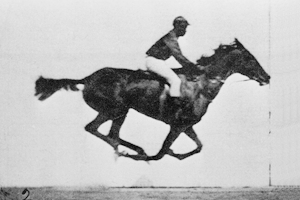
The Horse in Motion. Eadweard Muybridge, 1878.
But to create the illusion of movement from these still images would require further innovation. The basic concept of animation was already in the air through earlier inventions like the magic lantern and eventually the zoetrope. But a photo-realistic recreation of movement was unheard of. That’s where Muybridge comes in. His technique of capturing a series of still images in quick succession laid the groundwork for other inventors like Thomas Edison, Woodville Latham and Auguste and Louis Lumiere to develop new ways of photographing and projecting movement. Crucial to this process was the development of strips of light-sensitive celluloid film to replace the bulky glass plates used by Muybridge. This enabled a single camera to record a series of high-speed exposures (rather than multiple cameras taking a single photo in sequence). It also enabled that same strip of film to be projected at an equally high speed, creating the illusion of movement through a combination of optical and neurological phenomena.
By 1890, Eadward Muybridge created the Zoopraxiscope, Edison the Kinetoscope, the French inventor Jules Marey, created the Chronophotograph.
By 1893, 15 years after Muybridge won Stanford’s bet, Edison had built the first “movie studio,” a small, cramped, wood-frame hut covered in black tar paper with a hole in the roof to let in sunlight. His employees nicknamed it the Black Maria because it reminded them of the police prisoner transport wagons in use at the time (also known as “paddy wagons” with apologies to the Irish). One of the first films they produced was a 5 second “scene” of a man sneezing [NEW TAB].
There was just one problem: the only way to view Edison’s films was through the Kinetoscope, a machine that allowed a single viewer to peer into a viewfinder and crank through the images. The ability to project the images to a paying audience would take another couple of years.
In 1895, Woodville Latham, a chemist and Confederate veteran of the Civil War, lured away a couple of Edison’s employees and perfected the technique of motion picture projection. In that same year, over in France, Auguste and Louis Lumiere invented the cinematograph, which could perform the same modern miracle. The Lumière brothers would receive the lion’s share of the credit, but Latham and the Lumières essentially tied for first place in the invention of cinema as we know it.
It turns out there was another French inventor, Louis Le Prince (apparently we owe a lot to the French), who was experimenting with motion pictures and had perfected the technique by 1890. But when he arrived in the US for a planned public demonstration that same year – potentially eclipsing Edison’s claim on the technology – he mysteriously vanished from a train. His body and luggage, including his invention, were never found. Conspiracy theories about his untimely disappearance have circulated ever since (we’re looking at you, Thomas Edison).
All of these various inventions changed the world. The twentieth century brought faster cameras, longer films, and commercial expansion making film production a viable business.
Key Takeaways
Early camera technologies were important predecessors of motion picture film.
- The camera obscura and Daguerrotype were early innovations that inspired the idea of motion pictures.
- By 1877, Eadward Muybridge began studying the nature of motion, which spawned his invention of series photography.
- By 1890, Muybridge created the Zoopraxiscope, and other inventors such as Thomas Edison, Jules Marey, and the Lumière Brothers, had created their own version of motion picture technology.
Film as Business
People were immediately captivated by photos and were further excited by moving pictures. Terrified viewers ducked when they saw the Lumière films of trains pulling into a train station. To them, it looked very real.
The Lumière’s, Edison, W. L. K. Dickson, and others tried to dominate the film industry by creating businesses, cartels, and trusts in order to block people from entering the field. However, smart entrepreneurs like magician and trick film producer, George Méliès, found ways to not only buy a camera but also methods to innovate the film-making process. He created clever trick photography films where double exposures and science fiction themes could be incorporated.
In the US, the Motion Picture Patents Company (1908) attempted to control film production and limit the entry of competitors, but a lawsuit brought in 1912 (by William Fox of Fox Pictures, the company that would become Twentieth Century Fox) challenged the power of the trust. By 1917, the federal government dissolved the company, which allowed the American studio system to flourish in Hollywood. This amounted to another sort of trust and prohibition against competition that kept the major studios unchallenged for another forty years. In the 1940s, the federal government and courts brought a suit against Paramount that demanded the studios break up, ending the process of vertical integration (controlling production, distribution, and exhibition of all films). In the sixties, radio and television companies edged into the film production business. More independent non-studio productions arrived in Hollywood in the seventies, and today, Netflix, Amazon, and other companies are becoming film producers. Netflix alone spent over 13 billion dollars in production in 2021, producing new film products. Film is an enormous international business with corporations running productions in multiple countries.
Key Takeaways
In the early days of the film industry, inventors like Thomas Edison and The Lumière Brothers attempted to prevent newcomers from producing their own films.
- In 1912, Fox Pictures (known as Twentieth Century Fox today), entered a lawsuit against the Motion Picture Patents Company, which had attempted to control production and limit the entry of competitors.
- In the 1940’s the federal government sued Paramount, demanding that they break up their studios and put an end to vertical integration.
Film as World Culture
People across the globe from all parts of the world make films. Europe has film centers in London, Paris, Berlin, Rome, and Moscow. There are giant studios in Beijing to serve a popular film audience in China. In India, there is a massive film production center known as Bollywood in Mumbai and other technological centers. In Nigeria, there is a growing film community in Legos, known as Nollywood. Bollywood and Nollywood are so named because of the massive pervasive influence of Hollywood. Currently, filmmakers with camera phones and modest distribution are changing how films are made. It is now possible for people across the globe to use social media platforms for the creation and distribution of films.
Film as Ideology
It is hard to watch cinema today and not be reminded of the ideas and ideologies that are spread by film. Films contain clever references to ideas, which also contain hateful messages. D. W. Griffith’s landmark film, Birth of a Nation, was based on the racist novel entitled The Klansman made in 1915. Griffith describes a world in which the Ku Klux Clan, following the Civil War, were seen as heroes by some white people in the South. Griffith spent the rest of his career trying to show people that the source material was racist but that he himself did not personally subscribe to such terrible racist theories. Oscar Micheaux, the first great African-American filmmaker, made his response to Griffith in his topical film, Within Our Gates in 1919.

Public Domain Image. Micheaux Book & Film Company, 1920.
Oscar Micheaux‘s work as the first African-American producer-director critiqued racist stereotypes while giving a voice to his community by creating characters of color who were intelligent, brave, and refined. Micheaux also addressed issues faced by his community that had not been seen on film before, including lynching, discrimination, and the struggle to find employment. Often censored, and forced to fund his own productions, Micheaux’s self-made legacy continues as one of the most influential filmmakers in the black community.
Recent films such as Selma, 12 Years a Slave, The Help, Hidden Figures, and Get Out, have all addressed America’s struggle with racism. Other ideologies that have proven to be controversial are notions of American exceptionalism. This theory promotes that the United States is exceptional and does not follow the theories or the flaws of other states. In war films such as The Battle of the Bulge, Tora Tora, Tora, The Longest Day, and Platoon, the United States is continually seen as the kind victor in foreign wars, and the notion of such films is that American foreign policy is always on the right side of history. Such notions may not always be defensible or correct, particularly with films describing America’s role in The Vietnam War, the Second Gulf War, and other clandestine CIA conflicts conducted by the United States government over the last century. Sadly, though the United States sees itself as free, it may not be free of ideological bias just as Russian, Asian, South American, and African films reveal the bias of such cultures and their region and economic interests in the world.
The British went through a period of self-hypercritical films in the fifties and the sixties, including such features as Room at the Top, Saturday Night and Sunday Morning, The Loneliness of the Long Distance Runner, The Knack, Alfie, and A Taste of Honey, all films that criticized the darkly hierarchical British caste/social system. The United States has rarely been so personally hyper-critical of its own system and government.
Key Takeaways
Films often spread ideas and ideologies, sometimes driven by cultural biases and economic interests.
- D.W. Griffith’s film, Birth of a Nation, is an example of a film with racist messaging. D.W. Griffith claimed that despite the racist content of his film, it was the author of The Klansmen (which the film is based on), that held racist ideologies, not himself.
- In 1919, Oscar Micheaux made Within Our Gates as a response to D.W. Griffith’s film, and his claims that he was not racist.
- The message of American exceptionalism is common within Western films, often depicting the United States as the kind victor in foreign affairs. War films promote patriotism and usually paint the United States as being on the “right,” side of history.
Film as Cultural Artifact
People tend to regard films that are important to them or a group of people as cultural artifacts. These are films that have sociological and anthropological importance to people and their cultures. The Australian film, Walkabout chronicles the influence of Aboriginal culture in Australia by telling the story of a girl who is forced on a walkabout in the Australian desert where there is no one to help her. It’s a Wonderful Life celebrates the positive side of American culture when a savings and loan/credit union operation for poorer people is threatened by a larger monopolistic bank. It is doubtful that It’s a Wonderful Life reflects mid-century American business practice, but it does result in people feeling more optimistic about American business.
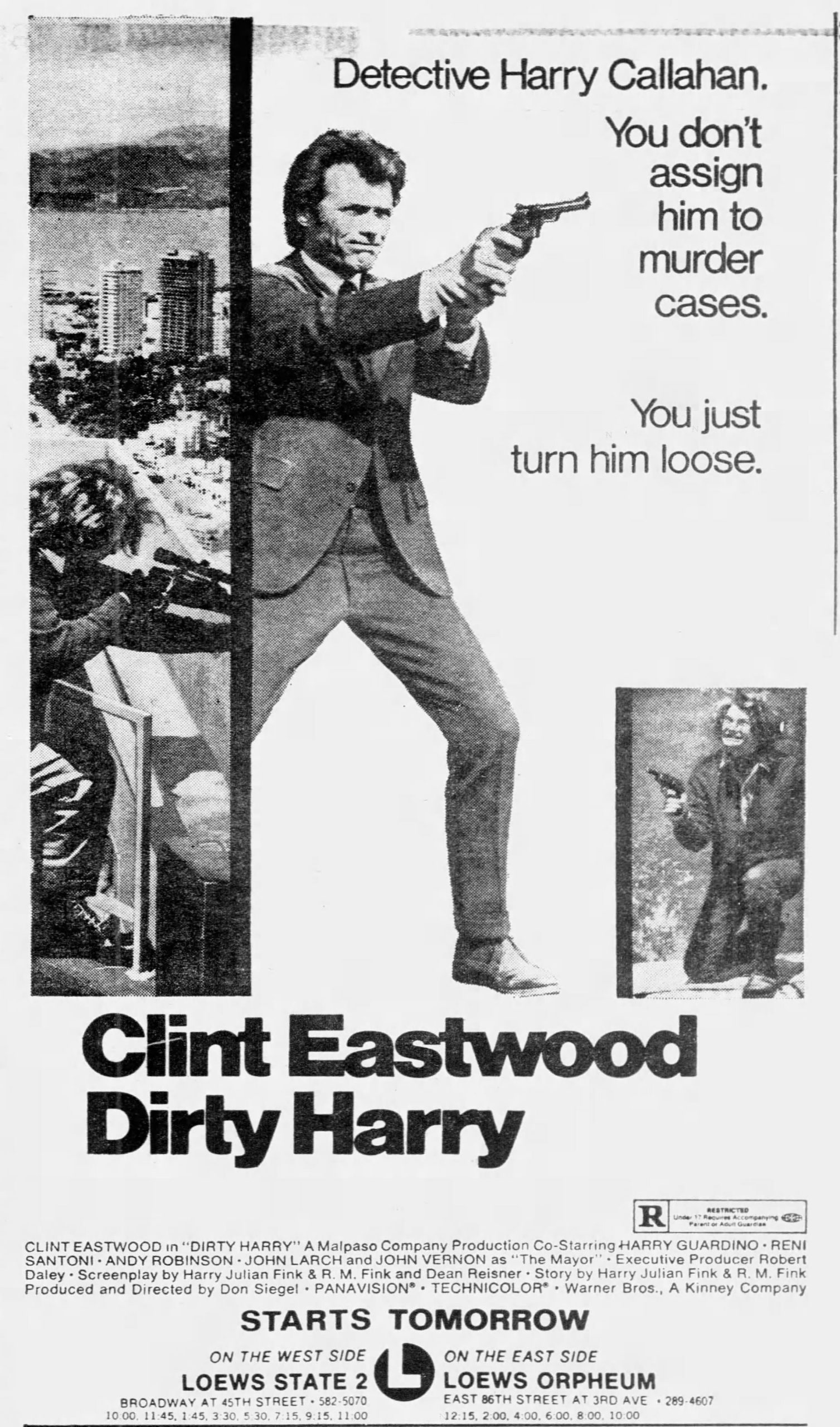
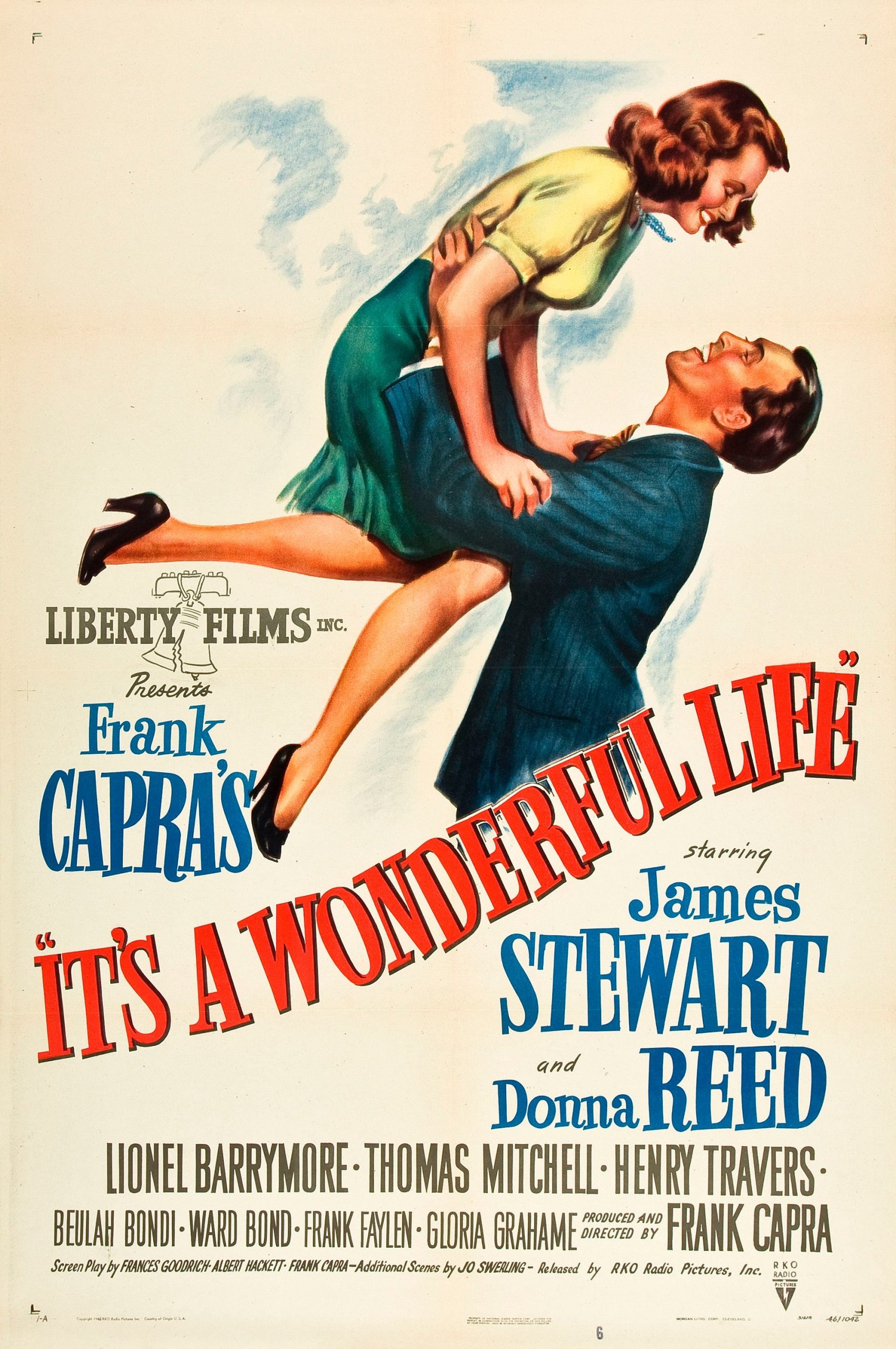
Dirty Harry shows a policeman who threatens, coerces, and assaults criminals, but Clint Eastwood’s character was met with approval from a culture that was wracked with high crime rates in the seventies and eighties. As society evolves, so does the meaning of films, as current attitudes no longer reflect the sentiments of the past. In the wake of recent cases of police using excessive force and the murder of individuals in some cases, some being racially motivated, people might look at Dirty Harry differently now. An artifact is a film that symbolically resonates with an audience in the period in which it was created. Film artifacts hold people’s attention as mythic, symbolic, and Jungian films reflect some attitudes of a group’s collective unconsciousness.
Key Takeaways
Some films serve as cultural artifacts, as their messages reflect the attitudes of society during certain periods of time.
- It’s a Wonderful Life, was made as a celebration of the positive aspects of American culture. The film’s message reflects society’s need for an optimistic outlook, as this film was made during the aftermath of World War II and the Great Depression.
- Dirty Harry, starring Clint Eastwood, depicted a policeman who threatened, coerced, and assaulted criminals. The character was met with approval, as the film was made during a time when crime rates were at a high. In our current political climate, the character is much less likely to be met with approval by the general public.
Film as Entertainment
Much of world television was based on repeating characters and melodrama. While the characters of Perry Mason, Rawhide, All Creatures Great and Small, Gun Smoke, Law and Order, I Claudius, Roseanne, Modern Family, The Office, Downton Abbey, Twilight Zone, Big Bang Theory, and ER might not be real, they provided us with situations and plots that spoke to our society intelligently, showed heroic characters solving problems, helping people, and largely promoted positive outcomes. Films, like television, established a largely positive aesthetic of our national mythology. Americans in such films are portrayed as kind, helpful, and right-thinking people who strive to help the underdog. For all their flaws, there is something intrinsically good in most of the characters in Citizen Kane, Lawrence of Arabia, Bridge on the River Kwai, Lilies of the Field, Norma Rae, Silkwood, Lincoln, Gentleman’s Agreement, Parasite, Titanic, Silence of the Lambs, Shape of Water, Hidden, and Unkindness. This is one of the strengths of film culture, a world culture that presumes we and all right-thinking people (whatever that means to a particular culture) will work to make the world a better place.
Film as Process
Some films are not about enjoyment or even an ideology but often test our anxieties about the medium. In the early sixties, Andy Warhol challenged our perceptions of film with a series of art house projects that questioned what film was about. Empire was an eight hour still camera shot of the Empire State Building. Maya Deren’s, Meshes of an Afternoon, was a short exploration of cinema motifs and philosophical issues that climaxed in an explosive way of seeing film. Clerks was a comedy set in a convenience store by Kevin Smith in which people’ comings and goings were the subject and comedy of the film. Several people had conversations during these transitory passings.
Some feature films have successfully engaged this investigation of process, such as Jane Campion’s, The Power of the Dog. In this film, a dull and brutal man wrestles with his personal identity, and slowly (the operative word in this whole film) tries to forge an identity and make relationships with people around him. Some films like Wes Anderson’s The Grand Budapest Hotel spend much of their time didactically commenting on the film, using meta-references and inside humor to comment on form and film style. As insular as Anderson’s style is, his films are still remarkable for their quixotic sense of life and self-directed humor.
The Grand Budapest Hotel
Paul Thomas Anderson’s largely misanthropic output (Boogie Nights, There Will Be Blood) mostly discusses anti-social and negative characters in society to mostly disastrous effect but often with revealing quirks about human nature. Lars Von Trier’s hypnotic expressions of society and apocalypse often teeter on the brink of nihilism but express an oddly redeeming humanity (Anti-Christ, Breaking the Waves, Melancholia).
Whatever its manifestations, as entertainment, as a process, as an artifact, as an ideology, as a business, as technology, as a world culture, film is fundamentally important to people, their emotions, and their way of seeing the world. People may like films about New York, the Holocaust, a haunted house, a dangerous violent Old West community, or a depressing hospital facility. Often films take us to such a region, drop us in that milieu, and involve us in characters within that culture, but they give us the blessed option to escape that world at the end of the film and return to our normal world, for better or worse.

Early Film
The early years of cinema were marked by great leaps forward in technology, but not so much forward movement in terms of art. Whether it was Edison’s 5-second film of a sneeze, or the Lumieres’ 46-second film Workers Leaving a Factory [NEW TAB]. The films were wildly popular because no one had seen anything like them, not because they were breaking new ground narratively.
There were, of course, notable exceptions. Alice Guy-Blaché was working as a secretary at a photography company when she saw the Lumières’ invention in 1895. The following year she wrote, directed, and edited what many consider the first fully fictional film in cinema history, The Cabbage Fairy [NEW TAB](1896):
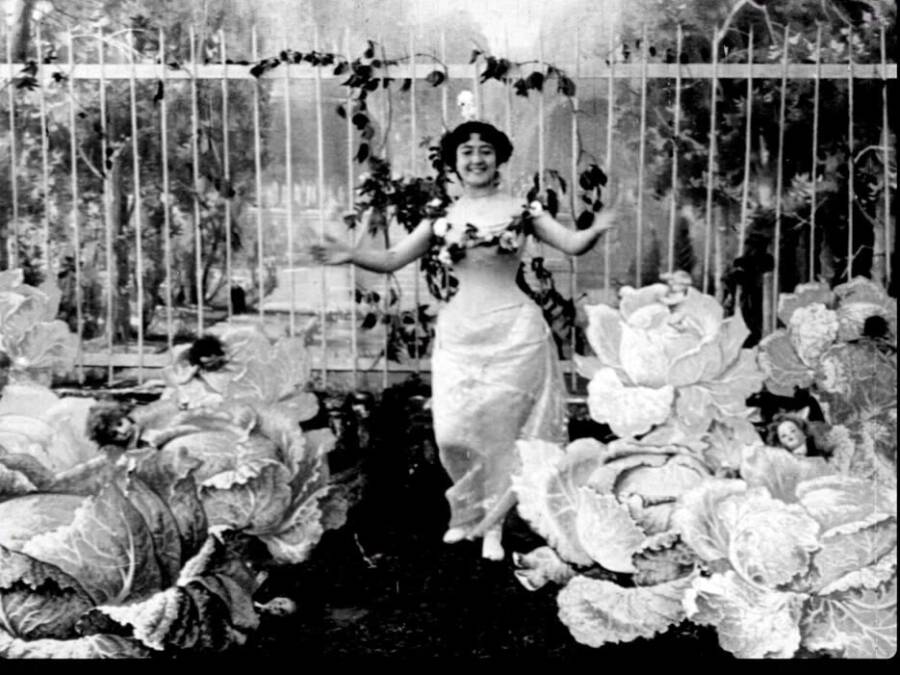
The Cabbage Fairy
But it was George Méliès who became the most well-known filmmaker-as-entertainer in those first few years. Méliès was a showman in Paris with a flare for the dramatic. He was one of the first to see the Lumieres’ cinematographe in action in 1895, and immediately saw its potential as a form of mass entertainment. Over the next couple of decades, he produced hundreds of films that combined fanciful stage craft, optical illusions, and wild storylines that anticipated much of what was to come in the next century of cinema. His most famous film, A Trip to the Moon [NEW TAB], produced in 1902, transported audiences to the surface of the moon on a rocket ship and sometimes even included hand-tinted images to approximate color cinematography. He was very much ahead of his time and would eventually be immortalized in Martin Scorsese’s 2011 film Hugo [NEW TAB].
A Trip to the Moon
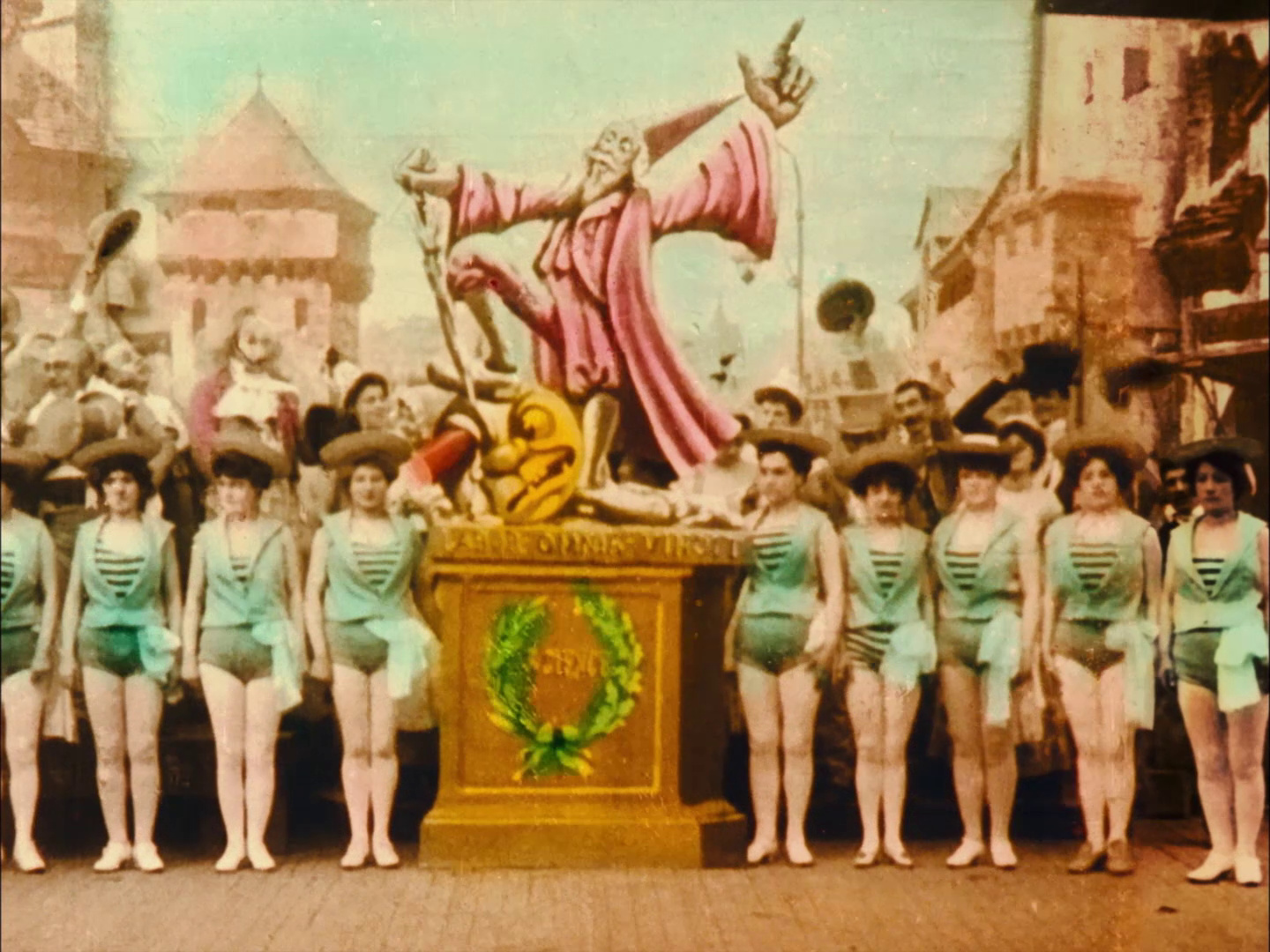
By the start of the 20th century, cinema had become a global phenomenon. Fortunately, many of those early filmmakers had caught up with Méliès in terms of the art of cinema and its potential as an entertainment medium. In Germany, filmmakers like Fritz Lange and Robert Weine helped form one of the earliest examples of a unique and unified cinematic style, consisting of highly stylized, surreal production designs and modernist, even futuristic narrative conventions that came to be known as German Expressionism. Weine’s The Cabinet of Dr. Caligari [NEW TAB] (1920) was a macabre nightmare of a film about a murderous hypnotist and is considered the world’s first horror movie. Lange’s Metropolis [New Tab] (1927) was an epic science-fiction dystopian fantasy with an original running time of more than 2 hours. Meanwhile in Soviet Russia, Lev Kuleshov and Sergei Eisenstein were experimenting with how the creative juxtaposition of images could influence how an audience thinks and feels about what they see on screen (also known as editing, a relatively new concept at the time). Through a series of experiments, Kuleshov demonstrated that it was this juxtaposition of images, not the discrete images themselves, that generated meaning, a phenomenon that came to be known as The Kuleshov Effect. Eisenstein, his friend and colleague, applied Kuleshov’s theories to his own cinematic creations, including the concept of montage: a collage of moving images designed to create an emotional effect rather than a logical narrative sequence. Eisenstein’s most famous use of this technique is in the Odessa steps sequence of his historical epic, Battleship Potemkin [NEW TAB] (1925).
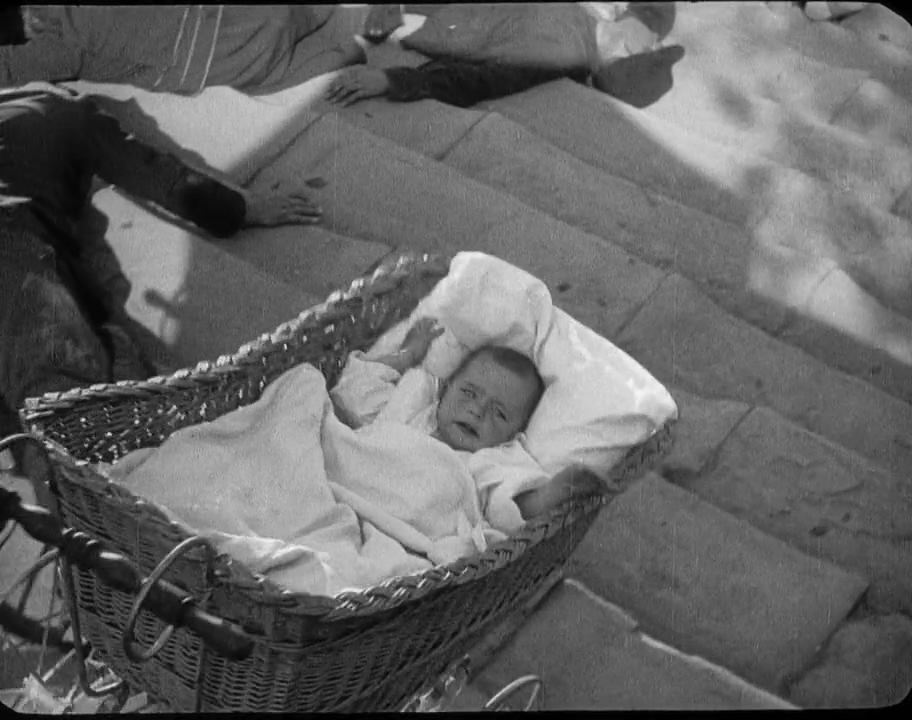
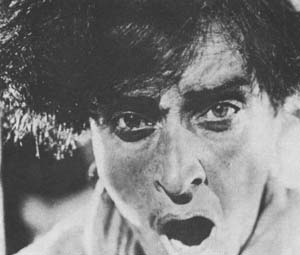
The Battleship Potemkin
But it was the United States that was destined to become the center of the cinematic universe, especially as it grew into a global mass entertainment medium. Lois Weber was an early innovator and the first American director, male or female, to make a narrative feature film, The Merchant of Venice (1914). Throughout her career, Weber would pursue subjects considered controversial at the time, such as abortion, birth control, and capital punishment (it helped that she owned her own studio). But it wasn’t just her subject matter that pushed the envelope. For example, in her short film Suspense [NEW TAB] (1913), she pioneered the use of intercutting and invented split screen editing.
Others, like D. W. Griffith [NEW TAB], followed suit (though it’s doubtful Griffith would have given Weber any credit). Like Weber, Griffith helped pioneer the full-length feature film and invented many of the narrative conventions, camera moves, and editing techniques still in use today. Unfortunately, many of those innovations were first introduced in his ignoble, wildly racist (and wildly popular at the time) Birth of a Nation [NEW TAB] (1915). Griffith followed that up the next year with the somewhat ironically titled Intolerance (1916), a box office disappointment, but notable for its larger-than-life sets, extravagant costumes, and complex storyline that made George Méliès’s creations seem quaint by comparison.
Weber, Griffith, and many other filmmakers and entrepreneurs would go on to establish film studios, which churned out hundreds of short and long-form content for the movie theaters popping up on almost every street corner.
Key Takeaways
The early years of film marked a great leap forward in terms of technology, but film as an art form went through an experimental period.
- Alice Guy-Blaché wrote, directed, and edited what many consider the first fully fictional film in cinema history, The Cabbage Fairy
- George Méliès, known for his extravagant style, became the most well-known filmmaker-as-entertainer in those first few years.
- Meaning found by the viewer in the juxtaposition of images, not the discrete images themselves, reflects a phenomenon that came to be known as The Kuleshov Effect.
- Lois Weber was an early innovator and the first American director, male or female, to make a narrative feature film, The Merchant of Venice (1914).
CINEMA GOES HOLLYWOOD
Unlike current times, this burgeoning new entertainment industry was not located in southern California. Not yet, anyway. Almost all of the production facilities in business at the time were in New York, New Jersey, or somewhere on the Eastern seaboard. Partly because the one man who still controlled the technology that made cinema possible was based there; Thomas Edison. Edison owned the patent for capturing and projecting motion pictures, essentially cornering the market on the new technology (R.I.P. Louis Le Prince). If you wanted to make a movie in the 1900s or 1910s, you had to pay Edison for the privilege.
Not surprisingly, a lot of would-be filmmakers opposed Edison’s control over the industry. And since patent law was difficult to enforce across state lines at the time, many of them saw California as an ideal place to start a career in filmmaking. Sure, the weather was nice. But it was also as far away from the Northeast as you could get within the continental United States, which would’ve made it much harder for Edison to sue for patent violations.
By 1912, Los Angeles had replaced New York as the center of the film business, attracting filmmakers and entertainment entrepreneurs from around the world. World-renowned filmmakers like Ernst Lubitsch from Germany, Erich von Stroheim from Austria, and an impish comedian from England named Charlie Chaplin, all flocked to the massive new production facilities that sprang up around the city. Universal Pictures, Metro-Goldwyn-Mayer (MGM), Warner Bros., all of them motion picture factories able to mass-produce dozens, sometimes hundreds of films per year. And they were surrounded by hundreds of other, smaller companies, all of them competing for screen space in thousands of new movie houses around the country.
One small neighborhood in the heart of Los Angeles became most closely associated with the burgeoning new industry: Hollywood.
By 1915, after a few years of failed lawsuits (and one imagines a fair number of temper-tantrums), Thomas Edison admitted defeat and dissolved his Motion Picture Patents Company.
In the heyday of those early years, some of those larger studios decided the best way to ensure an audience for their films was to own the theaters as well. They built extravagant movie palaces in large market cities, and hundreds more humble theaters in small towns, effectively controlling all aspects of the business: production, distribution, and exhibition. In business terms that’s called vertical integration. It’s a practice that would get them in a lot of trouble with the U.S. government a couple of decades later, but in the meantime, it meant big profits with no end in sight.
Then, in 1927, everything changed.
Warner Bros. was a family-owned studio run by five brothers and smaller than some of the other larger companies like Universal and MGM. But one of those brothers, Sam, had a vision. Or rather, an ear. Up to that point, cinema was still a silent medium. But Sam was convinced that sound, and more specifically, sound that was synchronized to the image, was the future. Fortunately, Sam Warner persisted, investing the company’s profits into the technology required to not only record synchronized sound, but to reproduce it in their movie theaters around the country. Finally, on October 6th, 1927, Warner Bros. released The Jazz Singer [NEW TAB] , the first film to include synchronized dialog.
Unfortunately, Sam Warner didn’t live to see it. He died of a brain infection on October 5th, the day before the premiere.
Suddenly, every studio was scrambling to catch up to Warner Bros. That meant a massive capital investment in sound technology, retrofitting production facilities and thousands of movie theaters. Not every production company could afford the upgrade, and many struggled to compete in the new market for films with synchronized sound. And just when it seemed like it couldn’t get worse for those smaller companies, it did. In October of 1929, the stock market crashed, plunging the nation into the Great Depression. Hundreds of production companies closed their doors for good.
At the start of the 1930s, after this tremendous consolidation in the industry, eight major studios were left standing: RKO Pictures, Paramount, MGM, Fox, Warner Bros., Universal Pictures, Columbia Pictures and United Artists. Five of those – RKO, Paramount, MGM, Fox and Warner Bros. – also still owned extensive theater chains (aka vertical integration), an important source of their enormous profits, even during the Depression (apparently movies have always been a way to escape our troubles, at least for a couple of hours). But that didn’t mean they could carry on with business as usual. They were forced to be as efficient as possible to maximize profits. Perhaps ironically, this led to a 20-year stretch, from 1927 to 1948, that would become known as The Golden Age, one of the most prolific and critically acclaimed periods in the history of Hollywood.
Key Takeaways
With his Motion Picture Patents Company, Thomas Edison controlled and forced many out of the film industry.
- Competitors moved to California to avoid being sued by Edison for patent violations. Edison lost a legal battle against Fox Pictures, and was forced to dissolve the Motion Picture Patents Company in 1915.
- Film companies would later be held responsible for the practice of vertical integration.
- Sam Warner, of Warner Bros., was the first to suggest synchronized sound in film. This feature was seen for the first time in their film, The Jazz Singer.
- The Great Depression caused many small film companies to close, leaving only 8 major studios in the 1930’s. This led to an incentive to produce more films as efficiently as possible, producing what we now call The Golden Age of Film.
THE GOLDEN AGE
The so-called Golden Age of Hollywood was dominated by those eight powerful studios and defined by four crucial business decisions.[1] [NEW TAB] First and foremost, at least for five of the eight, was the emphasis on vertical integration. By owning and controlling every aspect of the business, production, distribution, and exhibition, those companies could minimize risk and maximize profit by monopolizing the screens in local theaters. Theatergoers would hand over their hard-earned nickels regardless of what was playing, and that meant the studios could cut costs and not lose paying customers. And even for those few independent theater chains, the studios minimized risk through practices such as block booking and blind bidding. Essentially, the studios would force theaters to buy a block of several films to screen (block booking), sometimes without even knowing what they were paying for (blind bidding). One or two might be prestige films with well-known actors and higher production values, but the rest would be low-budget westerns or thrillers that theaters would be forced to exhibit. The studios made money regardless.
The second crucial business decision was to centralize the production process. Rather than allow actual filmmakers – writers, directors, actors – to control the creative process, deciding what scripts to develop and which films to put into production, the major studios relied on one or two central producers. At Warner Bros. it was Jack Warner and Darryl Zanuck. At RKO it was David. O. Selznick. And at MGM it was Louis B. Mayer, and 28 year-old Irving Thalberg.
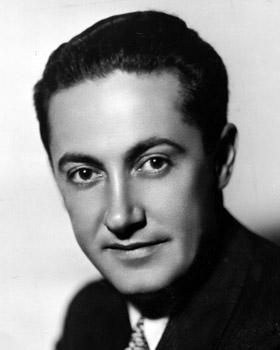
Thalberg would become the greatest example of the central producer role, running the most profitable studio throughout the Golden Age. Thalberg personally oversaw every production on the MGM lot, hiring and firing every writer, director, and actor, and often taking over as editor before the films were shipped off to theaters. And yet, he shunned fame and never put his name on any of MGM’s productions. Always in ill-health, perhaps in part because of his inhuman workload, he died young, in 1936, at age 37.
The third business decision that ensured studios could control costs and maximize profits was to keep the “talent” – writers, directors, and actors – on low-cost, iron-clad, multi-year contracts. As Hollywood moved into the Golden Age, filmmakers – especially actors – became internationally famous. Stardom was a new and exciting concept, and studios depended on it to sell tickets. But if any one of these new global celebrities had the power to demand a fee equal to their name recognition, it could bankrupt even the most successful studio. To protect against stars leveraging their fame for higher pay, and thus cutting in on their profits, the studios maintained a stable of actors on contracts that limited their salaries to low weekly rates for years on end no matter how successful their films might become. There were no per-film negotiations and certainly no profit sharing. And if an actor decided to sit out a film or two in protest, their contracts would be extended by however long they held out.
Bette Davis, one of the biggest stars of the era, once fled to England to escape her draconian contract with Warner Bros. Warner Bros. sued the British production companies that might employ her and England sent her back. These same contracts applied to writers and directors, employed by the studio as staff, not the freelance creatives they are today. It was an ingenious (and diabolical) system that meant studios could keep their production costs incredibly low.
The fourth and final crucial business decision that made the Golden Age possible was the creative specialization, or house style, of each major studio. Rather than try to make every kind of movie for every kind of taste, the studios knew they needed to specialize, to lean into what they did best. This decision, perhaps more than any of the others, is what made this period so creatively fertile. Despite all of the restrictions imposed by vertical integration, central producers, and talent contracts, the house style of a given studio meant that all of their resources went into making the very best version of a certain kind of film. For MGM, it was the “prestige” picture. An MGM movie almost always centered on the elite class, lavish set designs, rags to riches stories, the perfect escapist, aspirational content for the 1930s. For Warner Bros. it was the gritty urban crime thriller: Little Caesar [NEW TAB] (1931), The Public Enemy [NEW TAB] (1931), The Maltese Falcon [NEW TAB] (1941). They were cheap to make and audiences ate them up. Gangsters, hardboiled detectives, femme fatales; these were all consistent elements of Warner Bros. films of the period. And for Universal, it was the horror movie: Frankenstein [NEW TAB] (1931), Dracula [NEW TAB] (1931), The Mummy [NEW TAB] (1932), all of them Universal pictures (and many of them inspired by the surreal production design of German Expressionist films like The Cabinet of Dr. Caligari) [NEW TAB] .
But the fun and profits couldn’t last forever.
Three important events brought an end to the reign of the major studios and the Golden Age of Hollywood.
Olivia de Havilland
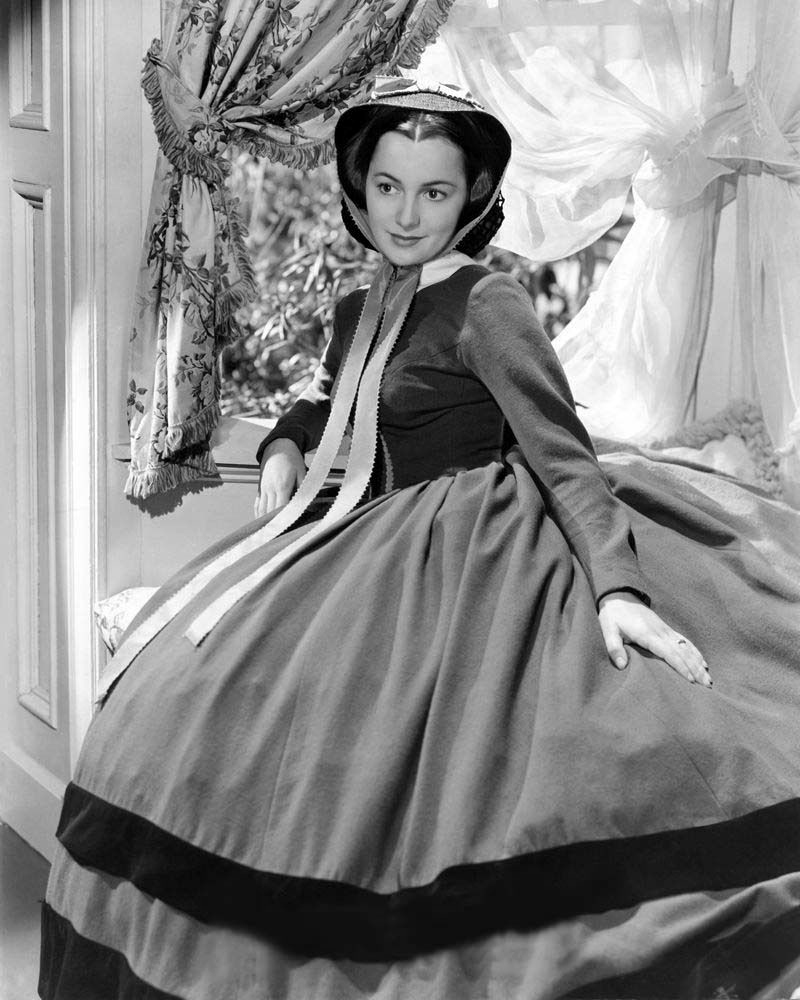
First, in 1943, Olivia de Havilland, a young actress known for her role as Melanie in Gone with the Wind [NEW TAB] (1939), sued Warner Bros. for adding six months to her contract, the amount of time she had been suspended by the studio for refusing to take roles she didn’t want. She wasn’t the first Hollywood actor to sue a studio over their stifling contracts. But she was the first to win her case. The court’s decision in her favor set a precedent that quickly eroded the studios’ power over talent. Soon actors became freelance performers, demanding fees that matched their box office draw and even profit participation in the success of their films. All of which took a sizeable chunk out the studios’ revenue.
Then, in 1948, the U.S. government filed an anti-trust case against the major studios, finally recognizing that vertical integration constituted an unfair monopoly over the entertainment industry. The case went to the Supreme Court and in a landmark ruling known as The Paramount Decision (only because Paramount was listed first in the suit), the court ordered that all of the major studios sell off their theater chains and outlawed the practices of block booking and blind bidding. It was a financial disaster for the big studios. No longer able to shovel content to their own theater chains, studios had to actually consider what independent theaters wanted to screen and what paying audiences wanted to see. The result was a dramatic contraction in output as studios made fewer and fewer movies with increasingly expensive, freelance talent hoping to hit the moving target of audience interest.
And then it got worse.
In the wake of World War II, just as the Supreme Court was handing down The Paramount Decision, the television set was quickly becoming a common household item. By the end of the 1940s and into the 1950s, the rise of television entertainment meant fewer reasons to leave house and more reasons for the movie studios to panic. Some of them, like MGM, realized there was money to be made in licensing their film libraries to broadcasters. And some of them, like Universal, realized there was money to be made in leasing their vast production facilities to television producers. But all of them knew it was the end of an era.
Key Takeaways
In the Golden Age of Film, movie studios used vertical integration, centralized production, and binding contracts with actors to maximize profits.
- Central producers were tasked with overseeing the scripts, themes, and editing of every film made within their company.
- Olivia de Havilland of Gone with the Wind, sued Warner Bros. over their contracts, prompting the downfall of fixed income contracts for actors/actresses.
- The Paramount Decision was the lawsuit that caused the end of block booking and blind bidding, preventing major companies from vertical integration by those means.
THE NEW HOLLYWOOD
The end of the Golden Age thrust Hollywood into two decades of uncertainty as the major studios struggled to compete with the new Golden Age of Television and their own inability to find the pulse of the American theater-going public. There were plenty of successes. MGM’s focus on musicals like Singin’ in the Rain [NEW TAB] (1952) and historical extravaganzas like Ben Hur (1959), for example, helped keep them afloat. (Though those came too late for Louis B. Mayer, one of the founders of the studio. He was fired in 1951.) But throughout the 50s and 60s, studios found themselves spending more and more money on fewer and fewer films while making smaller and smaller profits. To make matters worse, many of these once family-owned companies were being bought up by larger, multi-national corporations. Universal was bought out by MCA (a talent agency) in 1958. Paramount by Gulf Western in 1966. And Warner Bros. by Seven Arts that same year. These new parent companies were often publicly traded with a board of directors beholden to shareholders. They expected results.
And that’s when Warren Beatty, an ambitious young actor, walked into Jack Warner’s office with a scandalous script about two mass murderers named Bonnie and Clyde in his hand. Inspired by the upstart, avant-garde filmmakers making waves in France with their edgy, experimental films like Agnes Varda’s La Pointe Courte [NEW TAB] (1955), Jean-Luc Godard’s Breathless [NEW TAB] (1960) and Francois Truffaut’s The 400 Blows (1959). See a lecture on the Neo-realist films[NEW TAB] . A review [NEW TAB] of The 400 Blows helps to illuminate Truffaut’s art: Beatty wanted to break the mold of the Warner Bros. gritty crime thriller. He wanted to make something bold, unpredictable, and transgressive. He begged the aging Warner brother to finance the film.
Maybe Jack Warner was at the end of his creative rope. Maybe he knew the movie business needed to start taking risks again. Maybe he was inspired by Beatty’s artistic vision. Or maybe he had just sold the studio to Seven Arts and figured Beatty’s crazy idea for a movie would be their problem, a parting shot before the last Warner left the building.
Faye Dunaway in Bonnie and Clyde

Whatever the reason, Warner Bros. bankrolled Bonnie and Clyde (1967), tried to bury it on release, but ultimately had to admit they had a huge hit on their hands. It was as bold, unpredictable, and transgressive (for its time) as Beatty had hoped. And audiences, especially younger audiences, loved it.
Six months later, an off-beat comedy called The Graduate (1967) opened to equally enthusiastic audiences and extraordinary profits. And two years after that, BBS, a fledgling production company bankrolled by its success in television, produced Easy Rider (1969), a drug-fueled, fever dream of a movie that captured a changing America, a seismic shift in the culture at the end of the 1960s. It cost less the $500,000 to make and earned nearly $60 million at the box office. Something had indeed changed. The major studios weren’t sure exactly what it was, but they knew they wanted a piece of it.
The next decade would become another creative renaissance for the film industry known as The New Hollywood.[2] [NEW TAB] Like the Golden Age, which rose from the ashes of the Great Depression and the rise of synchronized sound, The New Hollywood rose from the ashes of The Paramount Decision and the rise of television. Unlike the Golden Age, however, The New Hollywood emphasized the authority of the director and star over the material, not the central producer. And rather than control costs to maximize profits, studios allowed the freelance artists they employed to experiment with the form and take creative risks. In fact, more and more filmmakers were smart enough to shoot on location rather than on the studio backlot where executives might micromanage their productions.
Those risks didn’t always pay off, but when they did, they more than made up for the disappointments. Films like The Godfather (1972) and The Exorcist (1973) broke every accepted norm of cinematography, sound design, narrative structure, editing, performance and even distribution models. And in the process broke every box office record.
But such creative fertility and unpredictability couldn’t last forever. Not when there are billions of dollars at stake. The New Hollywood was done in by a one-two punch of films that were so successful, so astronomically profitable, they would have to coin a new term for them: Blockbusters.
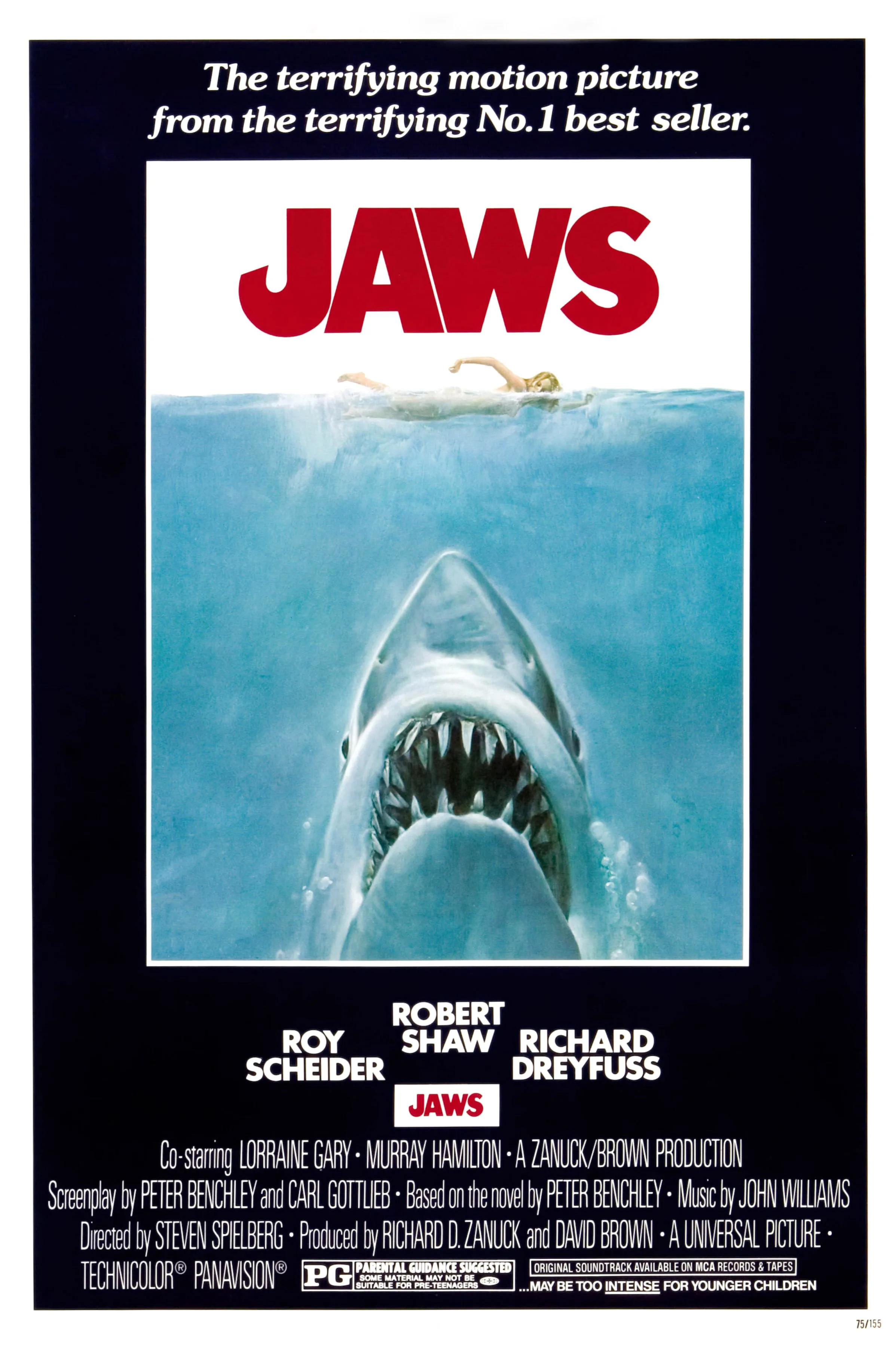 JAWS Movie Poster
JAWS Movie Poster
The first was meant to be a run-of-the-mill Universal monster movie, a direct descendant of the studio’s Golden Age classics like Frankenstein and Dracula. This time around, it would be a shark. A really big shark. And in a (futile) effort to save some money, they assigned a young, 28 year-old television director named Steven Spielberg to helm the project. JAWS (1975) cost $9 million to make (three times more than Universal budgeted) and took 159 days to shoot (three times longer the Universal had hoped), but it grossed more than $120 million in its first theatrical run. It hit Hollywood like a tidal wave. A simple genre movie with clear heroes and just enough eye-popping special effects to wow the audience. Best of all, there was no need for an expensive, star-studded cast or a well-known, temperamental director. The concept was the star. It was a formula the studios understood and knew they could replicate.
Two years later, 20th Century Fox released Star Wars (1977). Its success dwarfed that of JAWS.
Hollywood would never be the same.
Key Takeaways
The New Hollywood emphasized the authority of the director and star over the material, not the central producer.
- The movie, Bonnie and Clyde, (1967) changed the course of film. It’s unpredictable and transgressive nature was well received, especially by younger audiences.
- Similarly, The Graduate (1967) and Easy Rider (1969) represent the shift a production, where movies with lower filming budgets were able to perform exceptionally at the box office.
- Studios began to allow freelance artists creative control over their movies, yielding iconic works such as The Godfather (1972) and The Exorcist (1973).
- ‘Blockbuster,’ was coined after the release of JAWS, referring to a film whose success and profits were astronomical compared to other films.
BIG MEDIA AND GLOBAL ENTERTAINMENT
The rise of the blockbuster breathed new life into the Hollywood studio system. By the 1980s, they had successfully taken control of the filmmaking process from the young upstart artists of The New Hollywood era. But with increasing profits came increasing interest from investors and larger multi-national corporations looking to diversify their portfolios. The acquisition of major studios in the late 50s and 60s by mega-companies such as Gulf Western continued into the 80s and 90s.
For example, between 1969 and 2004, entrepreneur Kirk Kerkorian bought and sold MGM three times (mostly so he could put its name on a casino in Las Vegas) until finally selling it to Sony, the Japanese electronics company. In 1990, Warner Bros. merged with Time, Inc. to form Time Warner which was in turn purchased by AOL, an internet service provider, in 2000, then spun off into its own company again in 2009 before being purchased by AT&T in 2019. Throughout the 1980s, 20th Century Fox changed hands among private investors multiple times until finally falling into the hands of Australian media tycoon Rupert Murdoch. It was in turn acquired by Disney in 2019. But it’s Universal that has the most colorful acquisition history. In 1990, MCA which owned Universal was acquired by Panasonic, another Japanese electronics company. In 1995, Panasonic sold it to Seagram, a Canadian beverage company, which in turn sold it to Vivendi, a French water utility in 2000 (the French again!). Vivendi sold the studio to General Electric, this time an American electronics company that already owned NBC. Finally, in 2011, GE sold NBC Universal to Comcast, the cable provider (which incidentally joined forces with Sony to purchase MGM back in 2004).
If all of that makes your head spin, you’re not alone. In short, back in 1983, 90% of all American media was controlled by more than 50 distinct companies. By 2012, that same percentage was controlled by just 5. By 2019, it was down to 4: Comcast, Disney, AT&T and National Amusements.
This massive consolidation of American media companies has equally massive implications for cinema. Beholden to shareholders and the corporate bottom-line, Hollywood studios must be more efficient than ever, producing fewer and fewer movies at higher and higher budgets to attract more and more eyeballs. And if that sounds familiar, you’ve been paying attention. A similar consolidation occurred after the advent of sound and the financial havoc of the stock market crash of 1929. Only this time, major studios don’t have the luxury of monopoly control through vertical integration (though they are dancing close to the edge with Comcast and AT&T, both internet and cable providers, controlling nearly half of all media in the United States). Instead, they’ve looked abroad to a new and growing global audience to ensure profitability.
Before 2008, international sales made up less than 20% of box office dollars. By 2008 it was 50%. By 2013 it had grown to more than 70% of Hollywood’s bottom line. That’s due in part to a massive investment in theaters around the world. In 2019, there were more than 200,000 cinema screens globally. Just over 44,000 were in the United States and Canada. Nearly 100,000 were in Asia alone.3 [PDF] And the theaters themselves are not immune to consolidation. In 2013, Dalian Wanda, a Chinese company, bought the American theater chain AMC for $2.6 billion.
What does all of this mean for contemporary cinema? At the corporate Hollywood level, it means tailoring content for a global audience. That means building film franchises around globally recognizable characters and brands. If you’re thinking Marvel and DC comics, you’re on the right track. That means fewer original movies and more entertainment spectacles that in turn cost more money to make. The lessons Hollywood learned from the blockbusters JAWS and Star Wars in the 1970s seem to have been carried to their logical conclusion.
But corporate Hollywood isn’t the only hope for cinema.
Key Takeaways
With increasing profits came increasing interest from investors and larger multi-national corporations looking to diversify their portfolios.
- In 1983, 90% of all American media was controlled by more than 50 distinct companies.
- By 2012, that same percentage was controlled by just 5. By 2019, it was down to 4: Comcast, Disney, AT&T and National Amusements.
- Due to film being owned by only four companies, there is much less room for creative risk. Companies now turn to global audiences to ensure profits. By 2013, 70% of Hollywood’s profits came from global audiences. This means the need for globally recognized themes and characters. This also means that studios produce much fewer films, and that films are produced with a much higher budget.
A NEW HOPE
While much of this (very) brief history of cinema has focused on the media machine that is the Hollywood studio system, cinema – that is, the art of motion pictures – lives and breathes outside of that capital-intensive entertainment ecosystem. And it always has.
Alice Guy-Blachè, Georges Melies, Lois Weber, D.W. Griffith, and most of the very first cinema artists operated independently of any corporate studio. And during that great Golden Age of cinema, which was so dominated by Hollywood studios, independent producers like David O. Selznick were putting out massively popular films like Alfred Hitchcock’s Rebecca (1940) and the perennially remade A Star is Born (1937). One of the most successful films of the era, Gone with the Wind (1939) was arguably an “indie” picture (Selznick produced it with MGM as distributor). In fact, the New Hollywood of the 60s and 70s could not have taken hold at the corporate level without visionary filmmakers like Mike Nichols, Dennis Hopper, and Hal Ashby working outside of the studio system.
As the technology required to make motion pictures became easier and cheaper to acquire, more and more cinema artists chose to work outside of the studio system. Towering figures like Shirley Clarke in the 1960s, John Cassavetes in the 1970s, and Jim Jarmusch in the 1980s put out provocative and engaging cinema with limited distribution to match their limited budgets. Despite low budgets, these films often produced an enormous cultural impact. That trend continued into the 1990s and 2000s, supported by new production and distribution companies like Miramax (founded by the now disgraced Harvey Weinstein) that insisted on working outside of the studio system and often outside of Los Angeles itself.
That independent spirit in American cinema also created space for women and people of color to have a voice in the art form. A quick scan of the history above and you’ll notice there are not a lot of women’s names. And almost all of the men are white. But filmmakers like Shirley Clarke, Julie Dash, and Allison Anders didn’t wait around for Hollywood to give them permission to make great cinema. Nor did the filmmakers of the early so-called Blaxploitation movement (though their success was eventually and sadly co-opted by white filmmakers).
And as the massive corporate consolidation of the American media landscape has created a narrowing of cinematic content from the big studios, that indie spirit – along with a healthy dose of investor interest – has lead to new innovations in production and distribution models. Whether it’s pre-selling foreign rights to a script to fund its production, or turning to streaming services for funding in return for exclusive rights to content, filmmakers continue to find new ways to push the boundaries of what is possible in cinema. Just take a look at the nominees for best picture at any of the recent Academy Awards ceremonies. Once dominated by studio-financed pictures, almost all of them are now independent productions.
But perhaps the most exciting new direction in cinema is not found in theaters at all. For more than a century, cinema has been most closely associated with that roughly 90 minute, closed-ended feature film playing at a theater near you. And while that continues to be an important cinematic space, the rise of cable and streaming services in desperate need of content has created exciting new frontiers to explore for the medium. No longer restricted to those 90 or so minutes, cinema can sprawl over 100s of hours or even just a few, cut into 30 minutes chunks. And while it’s tempting to call this a new Golden Age of Television, even the term “television” no longer seems appropriate. We consume this content on all manner of devices, on our phones, laptops, even our wristwatches. Even theatrical content has picked up on the trend. What is the Fast and Furious, the Transformers or The Avengers franchises but multi-billion dollar episodic series distributed to theaters (and after a few months to our phones, laptops and wristwatches)?
Ultimately, regardless of how it’s made or how we engage with it, all of the above still fits into one artistic medium: cinema, the art of the motion picture. The tools and techniques, the principals of form and content, are all exactly the same. And that will be true in whatever comes next, whether it’s VR, AR or a cinema-chip implanted in our visual cortex (heaven forbid…). Mise-en-scene, narrative, cinematography, editing, sound and acting will all still matter. And our understanding of how those tools and techniques not only shape the medium but also shape our culture will also remain important. Maybe more than ever.
Reading Comprehension
Assess your understanding of the material:
- What is vertical integration?
- What factors prompted The Golden Age of Film?
- Describe the 4 business decisions made during The Golden Age that drove its success.
- Describe the process in which studios would prevent actors and actresses from taking advantage of their fame.
- What 3 events caused an end to The Golden Age of Film?
- How did the Paramount Decision influence the direction of filmmakers?
- How did the introduction of global entertainment, shareholders, and the consolidation of studios impact film?
Video and Image Attributions
The Horse in Motion. Eadweard Muybridge, 1878.[NEW TAB] Public Domain Image.
Edison Kinetoscopic Record of a Sneeze, Jan. 7, 1894 [NEW TAB] by Library of Congress. [NEW TAB] Standard YouTube License.
First Films Screenings in History – Lumière Brothers – December 28, 1895 [NEW TAB] by Exoplanet. [NEW TAB] Standard YouTube License.
La fée aux choux 1896 The Cabbage Fairy – 1st Female Filmmaker – Silent Short Film – Alice Guy [NEW TAB] by Smells Like Popcorn. [NEW TAB] Standard Vimeo License.
A Trip to the Moon – the 1902 Science Fiction Film by Georges Méliès [NEW TAB] by Open Culture. [NEW TAB] Standard YouTube License.
The Cabinet of Dr. Caligari (Restored, 2017 Score) [NEW TAB] by qfunkify. [NEW TAB] Standard YouTube License.
Metropolis (1927) full movie 1080p [NEW TAB] by SupremeOverlord. [NEW TAB] Standard YouTube License.
Battleship Potempkin – Odessa Steps scene (Einsenstein 1925) [NEW TAB] by Thibault Cabanas. [NEW TAB] Standard YouTube License.
Suspense. (1913) – Lois Weber, America’s 1st Female Filmmaker [NEW TAB] by Change Before Going Productions. [NEW TAB] Standard YouTube License.
1916 D.W. Griffith – “Intolerance” (Babylon 539 B.C. sequence highlights) [NEW TAB] by magicalmotionmuseum. [NEW TAB] Standard YouTube License.
The Spoken Words That Caused A Sensation In “The Jazz Singer” (1927) [NEW TAB] by Porfle Popnecker. [NEW TAB] Standard YouTube License.
Irving Thalberg. Central Producer at MGM. [NEW TAB] Public Domain Image.
Universal Classic Monsters | First Appearances of Frankenstein, Dracula, The Mummy, and more [NEW TAB] by Universal Pictures. [NEW TAB] Standard YouTube License.
Bonnie And Clyde (1967) Official Trailer #1 – Warren Beatty, Faye Dunaway Movie [NEW TAB] by Rotten Tomatoes Classic Trailers. [NEW TAB] Standard YouTube License.
Jaws – Defining the Summer Blockbuster [NEW TAB] by Matt Draper. Standard YouTube License.
Micheaux Book & Film Company, Public domain, via Wikimedia Commons
“Copyright 1946 RKO Radio Pictures Inc.”, Public domain, via Wikimedia Commons.
Warner Bros., Public domain, via Wikimedia Commons
Richard Schubert, CC BY-SA 3.0 <http://creativecommons.org/licenses/by-sa/3.0/>, via Wikimedia Commons
Linchong, Victoria. “Meet Alice Guy-Blaché, The First Female Filmmaker In The World.” AllThatsInteresting.com, May 10, 2021, https://allthatsinteresting.com/alice-guy-blache. Accessed January 12, 2025.
Georges Méliès, Public domain, via Wikimedia Commons
Sergei Eisenstein, Public domain, via Wikimedia Commons
Sergei Eisenstein, Public domain, via Wikimedia Commons
MGM, Public domain, via Wikimedia Commons
Roger Kastel, Public domain, via Wikimedia Commons
Distributed by Warner Bros.-Seven Arts., Public domain, via Wikimedia Commons
- For a much more detailed analysis of this period (and a thoroughly entertaining read for film buffs), check out Thomas Schatz’s The Genius of the System. ↵[NEW TAB]
- If you want to know more about this fertile, drug-fueled portion of Hollywood history, check out Peter Biskind’s Easy Riders, Raging Bulls. ↵[NEW TAB]
- You can see a comprehensive report on the global entertainment marketplace here: [PDF] https://www.motionpictures.org/wp-content/uploads/2020/03/MPA-THEME-2019.pdf ↵[PDF]


